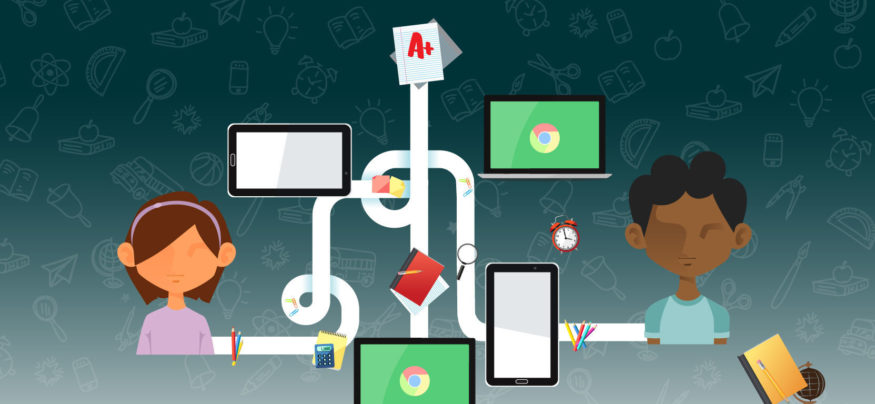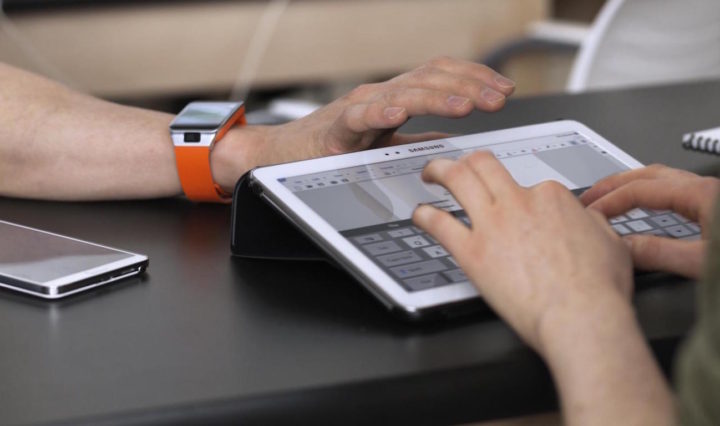Transforming K-12 education to a model of more personalized learning is a focal area of the Every Student Succeeds Act (ESSA), signed into law in December 2015. Scheduled to take full effect in the 2017 to 2018 school year, the law replaces the No Child Left Behind Act (NCLB) and gives state and local governments more control over educational policies, in cooperation with each other as well as with educators, parents and others.
No longer will schools be bound by federal mandates that require them to meet yearly progress goals, the results of which are based on student performance on statewide tests. Instead, educational communities can now modify standards to reflect what they think will best promote students’ ability to master subjects, and determine their own assessments and evaluations to measure school success, creating opportunities for implementing personalized learning and blended learning.
“ESSA has opened up the door for states and districts to play a real formative role in designing the systems that best meet their needs, and those of the students they serve,” writes Dr. Andrew Latham, director of Center on Standards and Assessment Implementation at WestEd, in an Educational Testing Service (ETS) report.
Personalizing Student Education
The value of the student-centered learning approach that ESSA champions, and considerations for reaching that goal, are topics of a recently published report from the International Association for K-12 Online Learning (iNACOL). Prioritizing and scaling personalized learning models to meet the needs of every student, it says, will help close achievement gaps and address inequities. The hoped-for results of tailoring learning to individual students’ strengths and needs, providing individually targeted support where they struggle, and integrating flexible online learning into their educational paths, will be a generation empowered “to thrive in our global economy.”
The report identifies frameworks under ESSA for state policymakers to create system-wide transformation through personalized learning. Working with other stakeholders in the education system, for example, they have opportunities to redefine student success and align accountability to that definition. They can provide rich, real-time data to teachers to support positive and meaningful assessment of students to discover what should come next in individual learning journeys, and where pupils need more development as part of competency-based education. They can customize instruction to those ends, learning the new skills they need for student-centered learning through modernized educator preparation.
Legislators, educators and parents alike have an opportunity to learn about how they can successfully promote individualized learning as part of their ESSA efforts from the advanced wave of schools and teachers already putting it into practice. Some are embracing personalized digital learning with the help of tablets and Chromebooks, whose low total cost of ownership and easy manageability emphasize the need to be sensitive to schools’ limited budgets and IT personnel.
Securing funding for technology can be tricky.
Download the white paper for a step-by-step guide on funding solutions. Download Now
Results Worth Replicating
Whatever digital resources they’re using, the main point is that many of these early adopters are seeing positive results in the classroom. Take the example of Aaron Kaswell, a math teacher who wrote recently about how creating personalized learning time and offering a blended learning model is working for his students at Middle School 88 in Brooklyn. The New York school adopted the Summit Basecamp model, created by Summit Public Schools in California.
“Each student has the ability to learn at his or her own pace, stop to take notes, pause a video, and even request an assessment,” Kaswell explains. While one student flies through math tasks working at a computer, Kaswell can focus on helping two other pupils with different math problems — checking back on the first student periodically to “push his thinking by asking him deeper questions.”
It’s no easy job to be constantly adapting to dozens of different learning needs, and in fact Kaswell says he’s “teaching like my hair is on fire.” But the payoff’s worth it. “My students are more empowered as learners, more self-directed and independent. I have seen their cognitive skills grow more in one year than I have ever seen because they are getting a rich, integrated curriculum of study,” he says. “A year in, that’s a good start.”
As technology becomes more commonplace in the classroom, it’s important for teachers to receive the support they need. Here’s what teachers need to make the most of educational technology.








